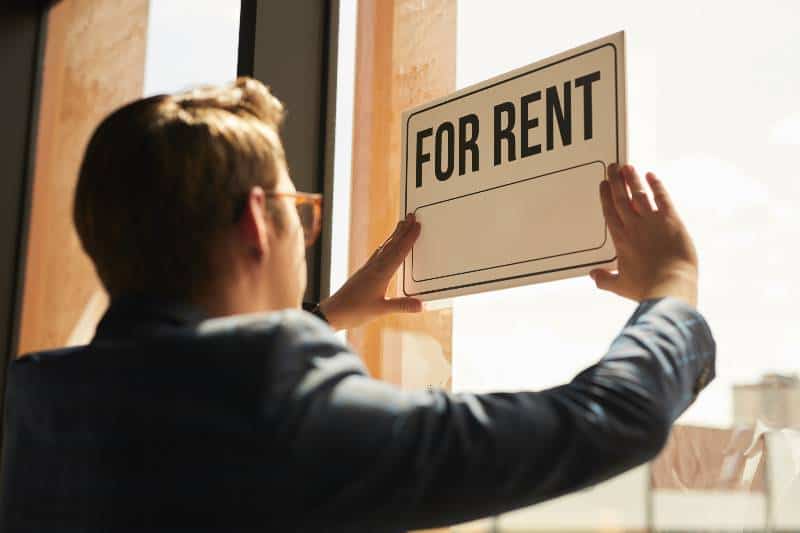Want to fill your commercial vacancy quickly and easily? As a property owner, you know that preserving an occupancy is more cost-effective than finding a new tenant. But in the event of sudden vacancies – be it from one or multiple properties like strip malls, retail centers, etc. – following these steps with your appointed property management company can help get the job done!
To fill vacant commercial properties, try out some creative strategies such as driving visibility with targeted marketing campaigns and renovating the space to make it more appealing. Additionally, building relationships with local businesses, community organizations, and government agencies may be key in finding the right tenants for your property.
Key Takeaways
- Drive visibility with targeted marketing campaigns and renovate the space to make it more appealing.
- Build relationships with local businesses, community organizations, and government agencies
- Take advantage of new technologies like virtual tours and 3D renderings to attract tenants.

It’s no secret that the commercial real estate market has been a bit of a roller coaster ride over the past few years. The good news is that we’re starting to see signs of improvement, but it’s still important to think about ways we can make sure the next boom is even bigger and better than the last one.
One way to do that? Filling up vacant properties! When properties are left vacant for too long, it can have a negative impact on the surrounding area. That’s why it’s so important for us as a community to work together to find ways to get these spaces filled so we can keep our communities growing and thriving.
If you’re looking for a way to support your town or neighborhood, why not start by helping fill those empty properties? In this blog post, we’ll be exploring simple steps that can help bring life into the vacant spaces of our communities.
Reasons for vacant commercial properties
Economic factors
The economy is always a factor in vacant commercial properties, but it’s not the only one. Some of the other factors that can impact vacancy rates include:
• Job loss and economic recession: When people lose their jobs, they move away to find work. This means that businesses need to close and leave vacant storefronts behind. Likewise, if there’s an economic recession and consumer behavior changes as a result (for example, people stop buying luxury items), businesses have no choice but to close down their operations or move elsewhere.
• Changes in consumer behavior: Consumers are constantly evolving, meaning that what they want out of retail stores and restaurants changes over time. The rise of online shopping means that brick-and-mortar stores have had to evolve with the times—or die out completely—to keep up with consumer demand.
Physical factors
There are a number of reasons why commercial properties can be vacant, and there are a lot of reasons that commercial properties go vacant, but one thing is for sure: it’s rarely because of the price.
Physical factors such as outdated facilities, poor location, and lack of parking may contribute to a commercial property being vacant. The location of the building can be an important factor for businesses looking for space to lease.
Location and amenities are key when it comes to attracting potential tenants for a building. Being situated in the heart of activity can make all the difference, as well as ensuring facilities meet modern standards with plenty of parking space available – both crucial factors that help set one property apart from its competitors.
Legal factors
The reasons for vacant commercial properties can be broken down into the following categories:
1. Zoning laws: Legal factors such as zoning laws can be a major reason why commercial properties go vacant. These laws vary from city to city and they can restrict the types of businesses that can be run in different areas, including the hours they’re allowed to operate. Many commercial properties aren’t zoned for commercial use, so they can’t be used as such.
2. Property taxes: Property taxes are another factor that can make it difficult for commercial properties to stay occupied. If you own a vacant commercial property, you may have to pay property taxes on it even if no one is living or working there. Some cities will offer tax breaks for owners of vacant properties in order to help encourage them to rent out their space and keep it occupied, but these are not always available everywhere.
Strategies to fill vacant commercial properties
Marketing and advertising
According to forbes.com Marketing, advertising is the best way to attract potential tenants to vacant commercial properties. Market your property to a specific audience, then market it again. If you have a retail space, for example, market it as such. If you have an office space, market it as such. Then, once someone is interested in renting your space, market it again!
This will help you find the right tenant for your property. It’s important not just because they’ll pay rent on time every month and keep up with repairs if something breaks—it’s also important because they’ll be excited about what they’re doing in their office or retail space and typically interact with other tenants or customers more often as well. This makes them happier overall and leads to positive reviews online that draw more people into your building.
Property renovation and improvement
When you’re trying to fill a vacant property, it’s important to think creatively about how you can make the space more attractive to potential tenants. If your property is an older building, consider investing in some renovations or improvements that will make it more appealing to potential tenants. This could include:
- Upgrading the flooring or adding new flooring.
- Installing new windows and doors can help reduce energy costs and improve the quality of light in the space.
- Replacing counters, sinks, or furniture with newer versions that are more stylish and up-to-date
- Adding new lighting fixtures to brighten up rooms.
Collaboration with local businesses, community organizations, and government agencies
By bringing in these partners, you will be able to draw on their expertise, experience, and connections to create a unique space that is not only welcoming but also makes the most of the surrounding area’s resources.
For example, if your vacant property is located near a park or recreational center that is popular among families with young children (and/or seniors), you could partner with an organization that offers classes for kids or seniors in those spaces. This will help make sure your building isn’t empty on weekends and also help draw more people into the neighborhood overall.
You can also collaborate with local businesses who want to open up shop near your building—this will allow them access to customers who may not live nearby but are looking for something new in the area.
Offering incentives such as rent abatements or reduced lease rates
If you’re a property owner, the last thing you want is for your commercial space to sit empty. But it happens.
The market is changing, and people are looking for different things in their work environments than they used to. Sometimes a business simply closes down, leaving an empty space behind. Other times, a business does well but moves to a new location because it needs more space or better access to transportation. In any case, commercial real estate is an investment—and when it sits empty for too long, that investment starts to lose value.
Here are some strategies that can help you fill vacant properties:
- Offering incentives such as rent abatements or reduced lease rates will help make your property more attractive to potential tenants.
- Consider partnering with other companies in your area to offer packages that include free rent for six months or a year
- Offer flexible leases so tenants can move in and out easily if they need more space at one point or another during the term of their lease (for example).
Virtual tours
As several property management companies move further into the digital age, virtual tours are increasingly being utilized to showcase empty business spaces and convert them into viable assets. With customers able to gain a comprehensive understanding of the property’s layout and features without stepping foot in person, property owners feel more empowered in their ability to entice potential clients.
Moreover, virtual tours provide property management companies with an excellent opportunity to demonstrate their professionalism and trustworthiness. Through strategic conversations and a friendly yet authoritative tone of voice, property managers can present ideal properties that capture customers’ attention and trust.
Are you curious to learn more about virtual tours for CRE? Check out this article I wrote – it’s sure to provide useful insight and help send your knowledge soaring!
Hire a broker who specializes in commercial properties
One of the best strategies for filling vacant commercial properties is to hire a broker who specializes in commercial properties.
Here’s why:
Commercial real estate is a very different market than residential real estate, so it’s important to have someone with the experience and expertise to navigate its unique challenges. A commercial real estate agent will be able to find tenants for your property, negotiate leases, and make sure that the terms are favorable for both parties.
A good commercial agent will also know what types of businesses would work best in your building, whether they’re looking for office space, empty retail space or pop-up retail spaces, or something else altogether. With their help, you’ll be able to fill vacant space quickly and at the right price—and keep your business running smoothly!
Tips for landlords and property owners
Conducting market research to determine the needs of potential tenants
As a landlord or property owner, staying informed on local market trends is imperative for filling vacant commercial spaces. Market research can reveal what your tenants require and how to create an advantageous leasing strategy with features including amenities, location, and size adjustments that address current customer needs.
Monitoring the economic landscape will also provide insight into pricing models as well as occupancy rates; investing in marketing techniques – such as online listings & digital advertisement platforms – should be considered when targeting both existing & potential customers so you stay top-of-mind within your locale.
Setting competitive lease rates and flexible lease terms
As a successful landlord or property owner, you want to ensure your commercial properties are always filled with happy renters. To reach this goal, make sure that lease rates and terms meet the current needs of prospective tenants. Impress them further by maintaining an approachable yet professional demeanor during message exchanges–you’ll be creating positive first impressions in no time! Additionally, provide support when needed throughout the entire moving process – from helping out with paperwork to connecting vendors for any renovations.
Maintaining the property and providing excellent customer service to tenants
It’s no secret that owning commercial property can be a profitable venture, but it takes more than luck to make sure your space remains marketable and desirable. Start by taking care of the details—from repair work to providing excellent customer service for tenants. When marketing yourself, don’t forget about how you present yourself: establish a professional yet welcoming relationship with potential clients through email or phone conversations so they feel comfortable working with you.
Staying up-to-date with market trends and adjusting strategies accordingly
To maximize success in commercial leasing, landlords and property owners must be diligent about staying abreast of their local market. Adjusting strategies to up-and-coming trends can give them a competitive edge – one that begins with an effective marketing strategy. Word-of-mouth advertising, community-building relationships, and tenant referrals are all reliable resources; while the establishment of brand recognition through industry associations remains key as well! Ultimately though, creating professional yet friendly interactions when working with potential tenants is paramount in sealing the deal.
Examples of successful commercial property fillings
For those looking to take on a commercial property filing, it’s The success of any development project begins with the right preparation. Working in close collaboration between all stakeholders, and identifying and addressing potential concerns at the start helps prevent delays or roadblocks down the line. For added filing success, make sure to draw on research data and market analysis as well as communicate clearly what’s being offered from an informed legal standpoint – that way you can be confident of hitting (or exceeding) targets every time!
Fill Vacant commercial properties FAQs
Why is it important to fill vacant commercial properties?
It’s important to fill vacant properties because it gives a community a sense of life and vibrancy. A community that has a lot of commercial vacancies is likely to have an image problem and be perceived as having a lack of opportunity. When you have empty storefronts, people will avoid those areas, which can lead to an overall decline in business.
What are some common reasons why commercial properties become vacant?
Vacant commercial properties are often emblematic of larger, underlying issues within the market. In some cases, extended periods on the market without any offers may be indicative of a marketing failure or lack of interest from buyers. Conversely, owners actively selling their own property in order to avoid paying taxes could also render it commercially vacant – as can problems with zoning and regulations that make operating difficult for businesses wanting to settle there.
What are some strategies for filling vacant commercial properties?
There are a lot of strategies for filling vacant commercial properties, but we’re going to focus on five of my favorites.
- Improve the curb appeal of the building.
- Redesign the interior to make it more appealing to tenants.
- Offer incentives to tenants, such as reduced rent for a certain period of time.
- Increase public awareness about the available space.
- Hire a broker who specializes in commercial properties.
How can landlords and property owners attract tenants to their vacant properties?
Landlords and property owners are always looking for new ways to attract tenants to their vacant properties. The best way to do this is by making sure that your property is in good condition, clean, and well-maintained. You want to make sure your property is well-lit, with a security system installed, and you should make sure the appliances in your rental units are in good working order.
What are some incentives that landlords can offer to potential tenants?
Appealing to potential tenants can be a challenge, but there are several ways landlords can incentivize long-term renters. Offering financial incentives such as reduced rent is an excellent way to attract the best candidates – plus it’s good for business! Similarly, providing additional amenities – think basic extras like high-speed internet and air conditioning – will add value that makes your rental property even more desirable.
Conclusion
Vacant commercial properties can be a big drain on an owner’s resources, and bring down the value of the business in the surrounding neighborhood. By acting now, property owners and landlords can protect their business investments, and help their communities thrive. It all starts with taking action, whether it’s through offering incentives or hiring a real estate agent who specializes in commercial properties.
Everyone could use a little help sometimes and that’s why I’m continuing to provide this service. If you are struggling to fill your vacant commercial property or If you’re ready to learn more about my managing strategies specifically tailored to your commercial property needs, please don’t hesitate to call me or schedule a free consultation today. By collaborating, we can achieve extraordinary results! Let’s unlock the potential of our vacant properties and maximize efficiency.
Blog Articles Disclaimer
The information presented in articles on our website or affiliated platforms is exclusively intended for informational purposes. It’s crucial to grasp that this content does not constitute professional advice or services. We strongly recommend our readers to seek guidance from appropriately qualified experts, including, but not limited to, real estate and other attorneys, accountants, financial planners, bankers, mortgage professionals, architects, government officials, engineers, and related professionals. These experts can offer personalized counsel tailored to the specific nuances of your individual circumstances. Relying on the content without consulting the relevant experts may hinder informed decision-making. Consequently, neither Tolj Commercial Real Estate nor its agents assume any responsibility for potential consequences that may arise from such action.






